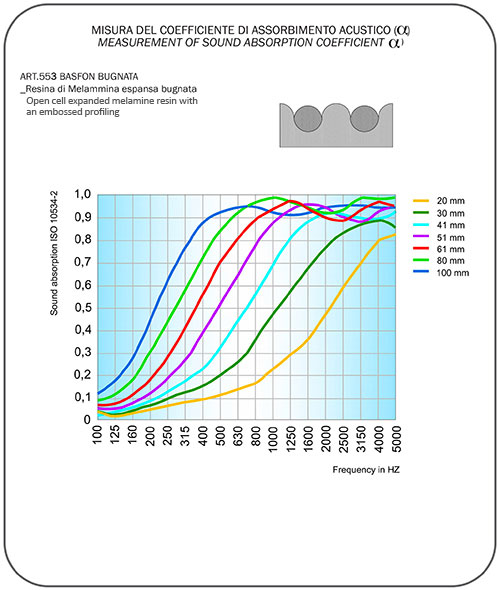The soundproofing materials are widely used in industry, nautical, within compressors, generators etc.. The sound absorbing materials may be a fibrous structure, such as polyester fibers or foamed materials (polyurethanes, melamine resins) with open cellular structures. The performance of the sound absorbing materials are strongly influenced by:

The physical characteristic of sound absorbing materials is to not return the sound energy that invests them. This particular behavior of the materials comes from their ability to dissipate the acoustic energy that investsthem, transforming them into mechanical energy and heat through the friction and the movement of the air contained in the porosity of the alveoli.
The degree of sound absorbency of a material is expressed by its sound absorption coefficient (α) given by the ratio between sound energy absorbed and sound energy that invests it.
A material with absorption α=1 s totally sound absorbing, while a material having α=0 is totally REFLECTIVE.
In indoor environments, the noise caused by a sound source is partially propagated through the boundary structures (walls) and partly reflected in its interior. The internally reflected part causes a continuous overlap of direct waves and reflected waves within the structure itself. The effect is essentially what we are seeing in the large empty volumes , such as: churches, sheds, where to direct sound of the voice, or of the machinery, you sum up the reflections of the walls themselves.
The result is a chaos of overlapping, annoying sounds called RIVERBER OR ECOSONORA. This phenomenon, besides making the environment unpleasant, makes it difficult to hear and understand voices.
Only after a proper “phonometric“ instrumental analysis can be detected the REVERBERATION TIME, and consequently calculate the amount of sound absorbing material necessary to reduce the phenomenon of reverberation and have a good speech intelligibility.
